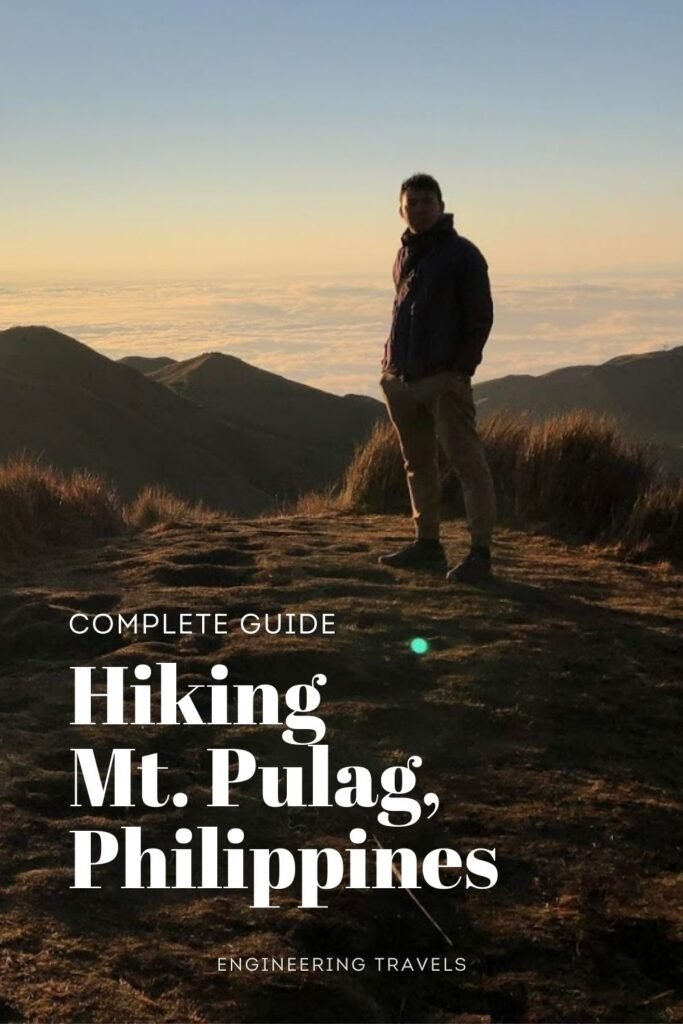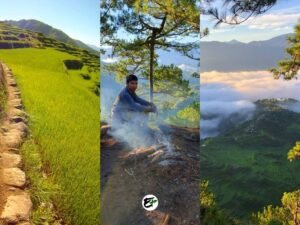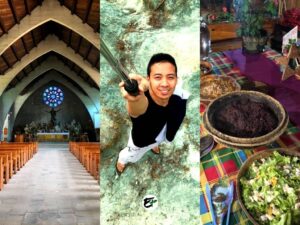Prepare Mount Pulag Hike: What To Expect And What To Bring
I still remember nearing the top of Mount Pulag when dawn broke. The horizon still looked purplish-red then, and at that moment, I had my first sight of the sea of clouds. I almost cried with awe and happiness.
Hiking on Mount Pulag gave me an unforgettable experience.
Mount Pulag is my mother mountain; I’ve been at its peak twice, and going back for the third time is definitely a yes! In this blog post, I will share all you need to know about Mount Pulag, like what to expect, requirements, what to bring, the best time to go, and other tips. (A checklist of things to bring when hiking Mount Pulag is included in this post.)
This post contains affiliate links. I may receive a tiny commission at no additional cost to you.
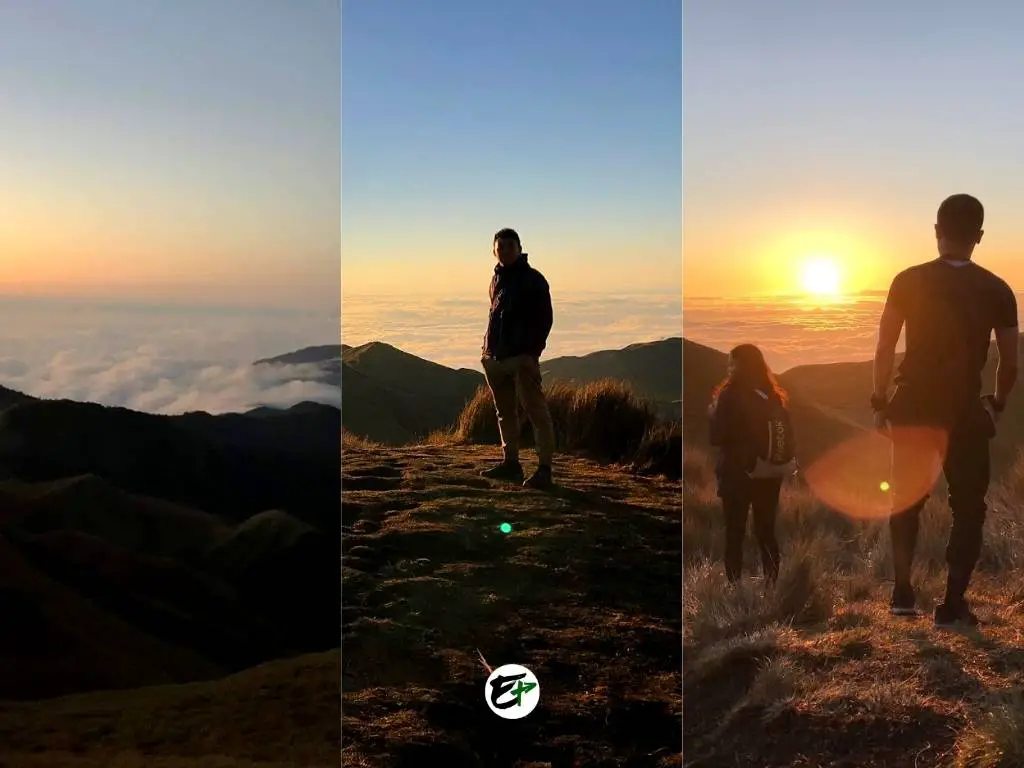
Use the table of contents to skip to topics.
Check out my personal journey of conquering Mount Pulag not once, but twice. I’ve also compiled a bucket list of the most famous mountains in the Philippines that are perfect for hiking.
My hiking experience, shared knowledge from my fellow hikers, and research are the basis of my tips and recommendations. If you have any questions, feel free to post a comment in the comment section below.
What to Expect in Mount Pulag
Mount Pulag stands as the third highest peak in the Philippines and takes the crown as the tallest on Luzon island, soaring to a height of 2,926 meters (or 9599 feet) above sea level.
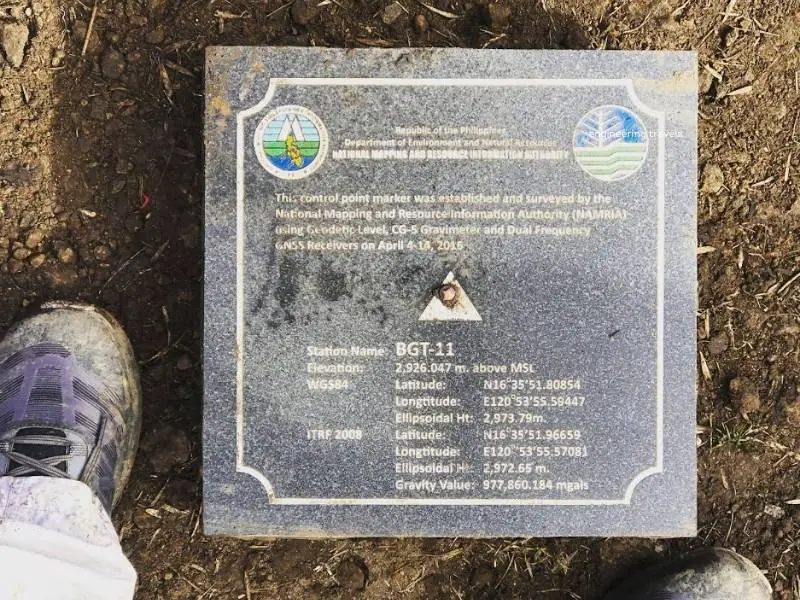
Situated in northern Luzon, Mount Pulag is a mere 85 kilometers (53 miles) north of Baguio City and just over 300 kilometers (186 miles) north of Manila.
The summit of Mount Pulag serves as a unique junction where the borders of the provinces of Ifugao, Benguet, and Nueva Vizcaya converge. Reaching the summit of Mount Pulag offers a unique experience – you’ll be standing in three different provinces of the Philippines simultaneously!

Depending on the hiking trail you choose on Mount Pulag, your journey may begin around 1500 meters (4921 feet) above sea level. From there, your trek to the peak will take you through the mountain’s three distinct regions: the Pine Forest, the Mossy Forest, and the Grasslands.

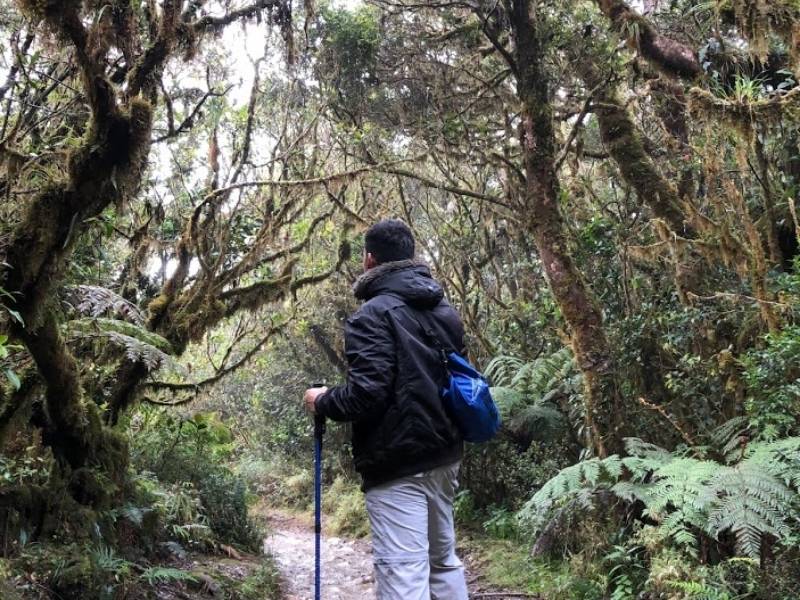
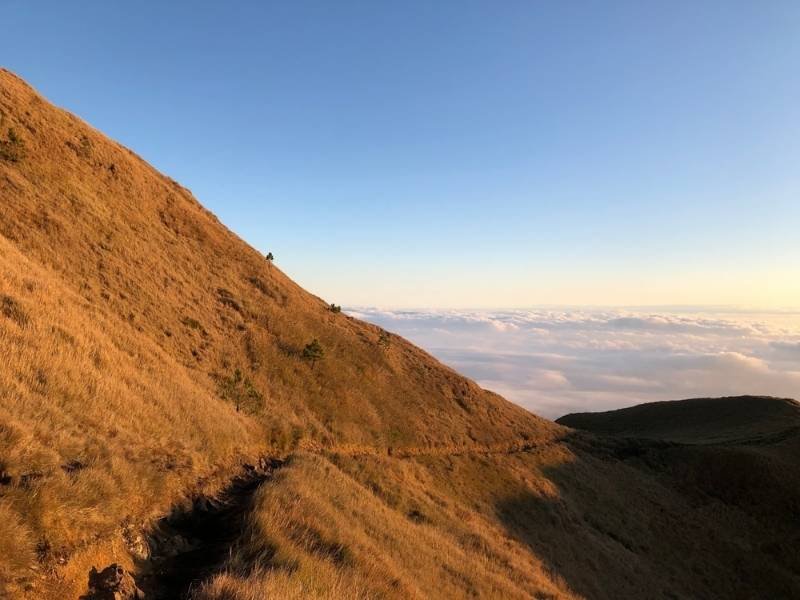
Starting from an elevation of 1100 meters (3608 feet) above sea level, which marks the beginning of the Mount Pulag National Park, and extending up to 2300 meters (7545 feet), you’ll find yourself immersed in the pine forest area.
As you ascend beyond the pine forest, the landscape gradually transforms into the enchanting Mossy Forest. This region is characterized by trees adorned with moss-covered branches, lending it its name. The Mossy Forest truly comes alive when bathed in strong sunlight, causing the mosses to glow and create a light effect reminiscent of a photographic “Halo”.
When I hiked Mount Pulag, I did not notice the Mossy Forest right away during our ascent. We began our ascent after midnight, and by the time we reached the Mossy Forest, it was still quite dark. It seemed like just an ordinary forest during that time. I believe this is a common experience for hikers who, like us, start their journey after midnight.
The Mossy Forest actually covers around 50% of the total land area of Mount Pulag National Park. Nestled within this mystical forest is Ambulalakaw Lake, a body of water believed to be the home of the Kalayunga ancestors.
Once you’ve traversed the Mossy Forest, you’ll find yourself stepping into the Grasslands. This is the highest region of Mount Pulag and a sign that you’re nearing the peak. But don’t be fooled into thinking you’re just minutes away from the summit!
While the Grasslands only make up about 7% of Mount Pulag’s total area, the hike from here to the peak can still take anywhere from an hour to two hours, depending on your pace.
If you’re setting off on your Mount Pulag hike after midnight and the weather takes a turn for the worse (with no signs of clearing up), I’d recommend staying within the Mossy Forest until sunrise. The Grasslands, true to its name, is an open field with no tree cover.
Unless you’re accustomed to freezing temperatures, the biting cold, amplified by strong winds, could potentially lead to hypothermia. The trees within the Mossy Forest can provide some much-needed shelter from the chilling winds in case of inclement weather. But, of course, I hope it will not be the case (rainy weather) for you!
While I may have painted the Grasslands of Mount Pulag as a challenging part of the trail, it’s actually where some of the most breathtaking views can be found when the weather is clear. The Grasslands offer a sweeping panorama of endless rolling hills, picturesque slopes, and charming dwarf bamboo trees.
The best part? You don’t even have to reach the summit to witness the mesmerizing sea of clouds! At an altitude ranging from 2,500 meters (8202 feet) to 2,926 meters (9600 feet), you’re already above the height where overcast clouds form. So, even if you haven’t reached the summit of Mount Pulag by sunrise, there’s no need to worry – you’re in for a spectacular view!
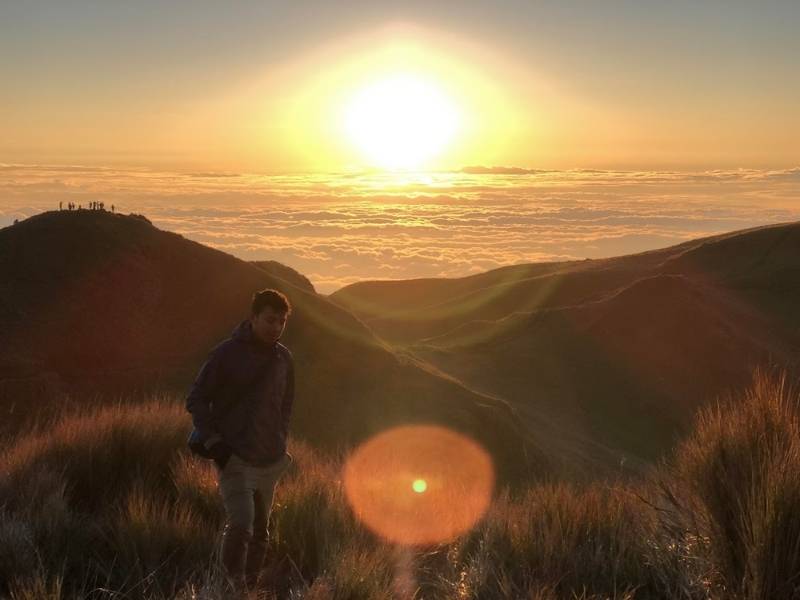
In my opinion, reaching the summit of Mount Pulag before sunrise offers an unparalleled experience. The view from the peak is truly breathtaking, unobstructed by any other peaks, and provides a spectacular vista of the sea of clouds.
If the sea of clouds doesn’t make an appearance, you’ll be treated to a stunning view of layered mountains instead. It’s still a sight to behold and one you’ll undoubtedly fall in love with, too.
Read my other blog posts about the Philippines
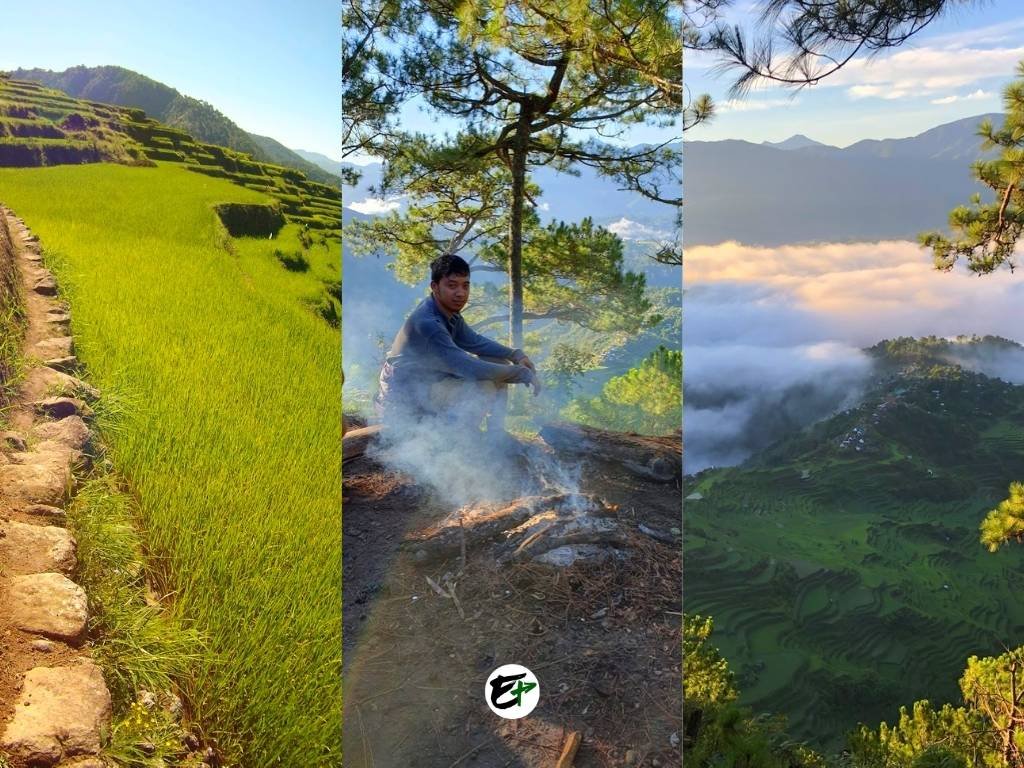
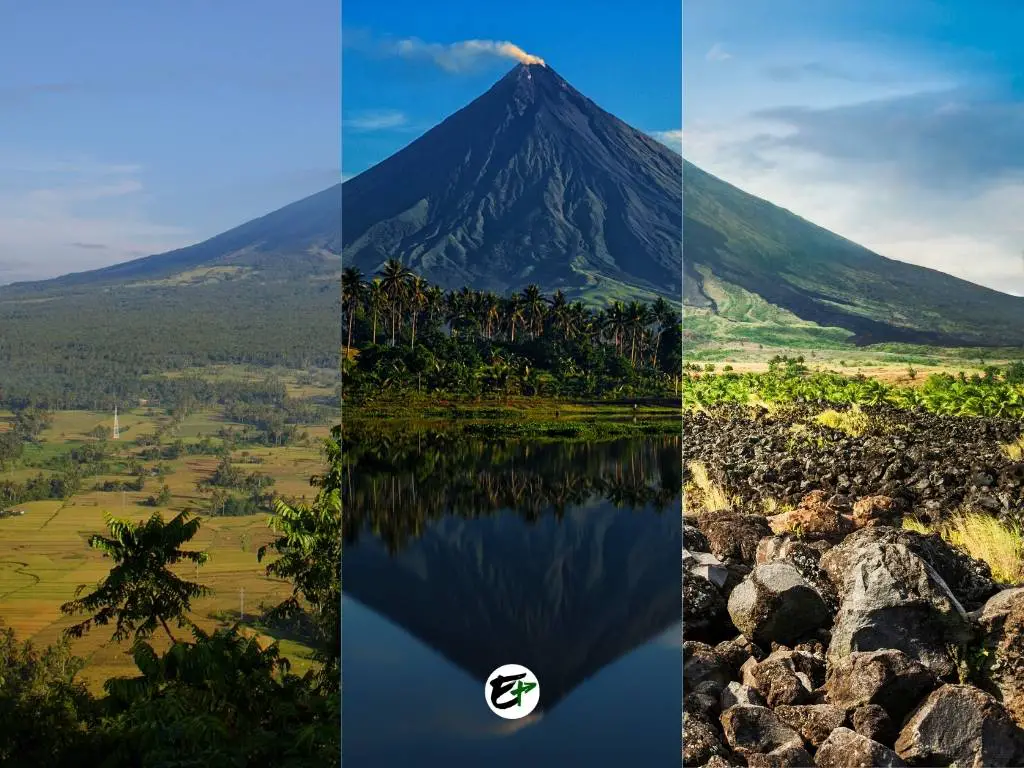
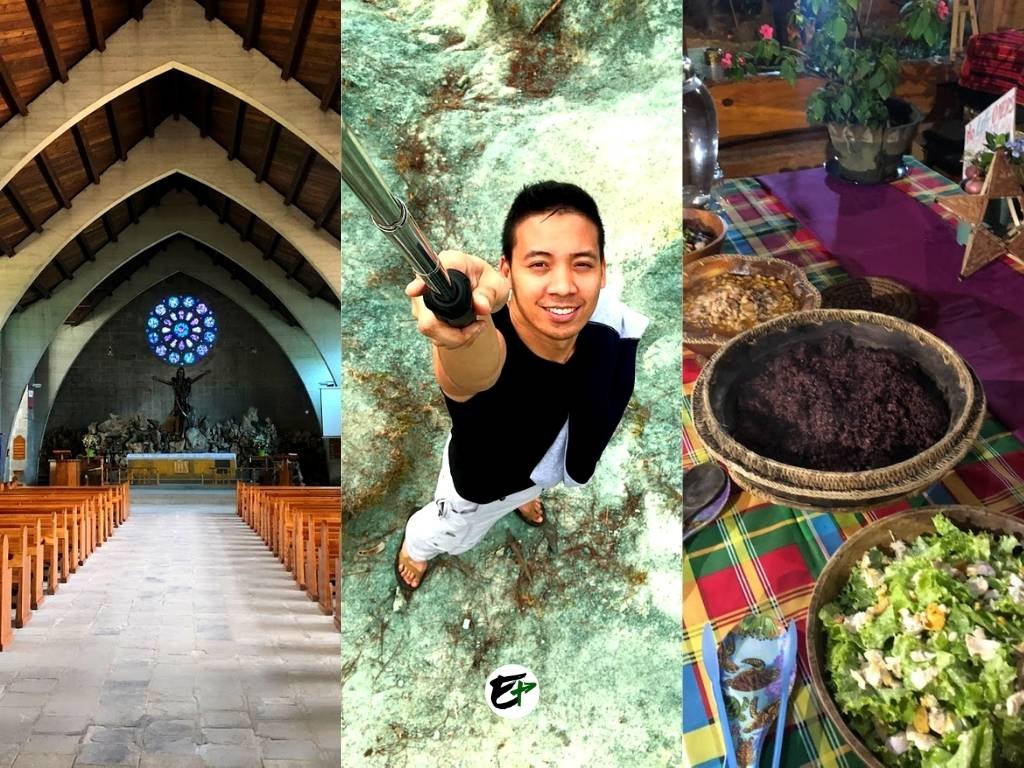
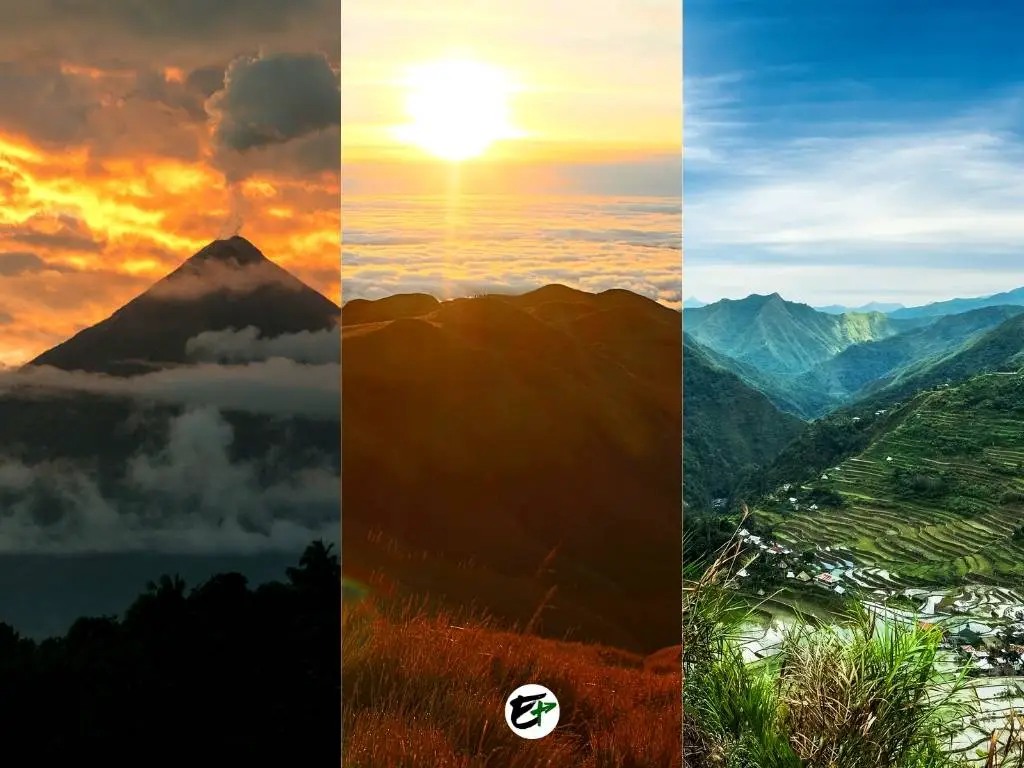
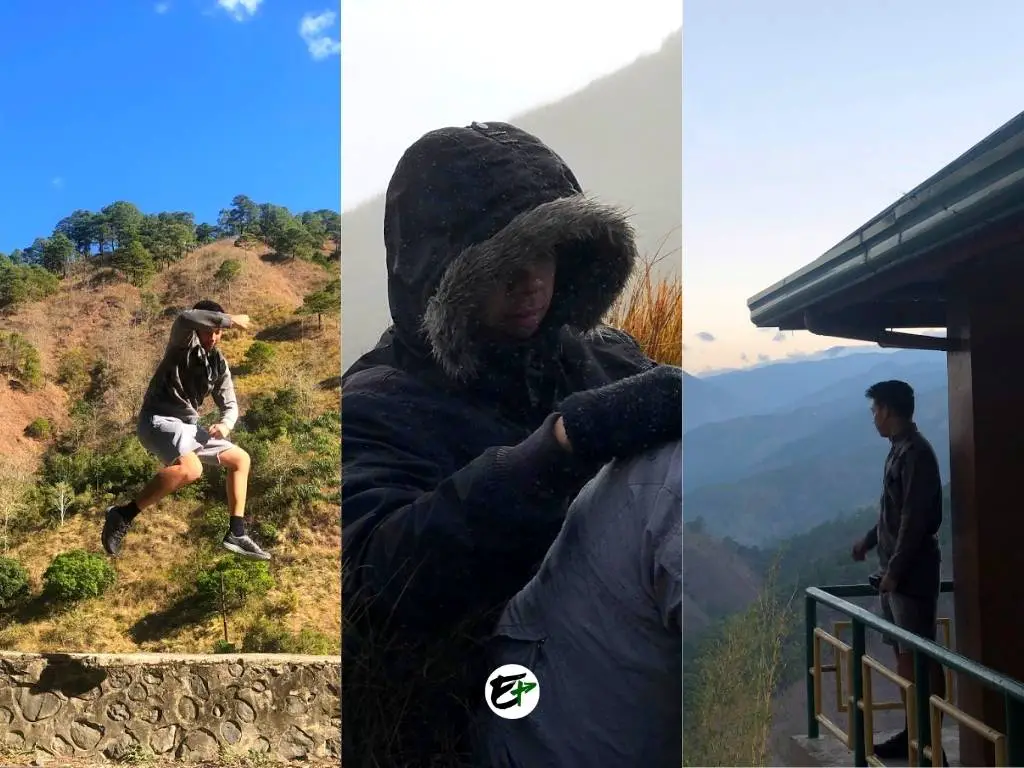
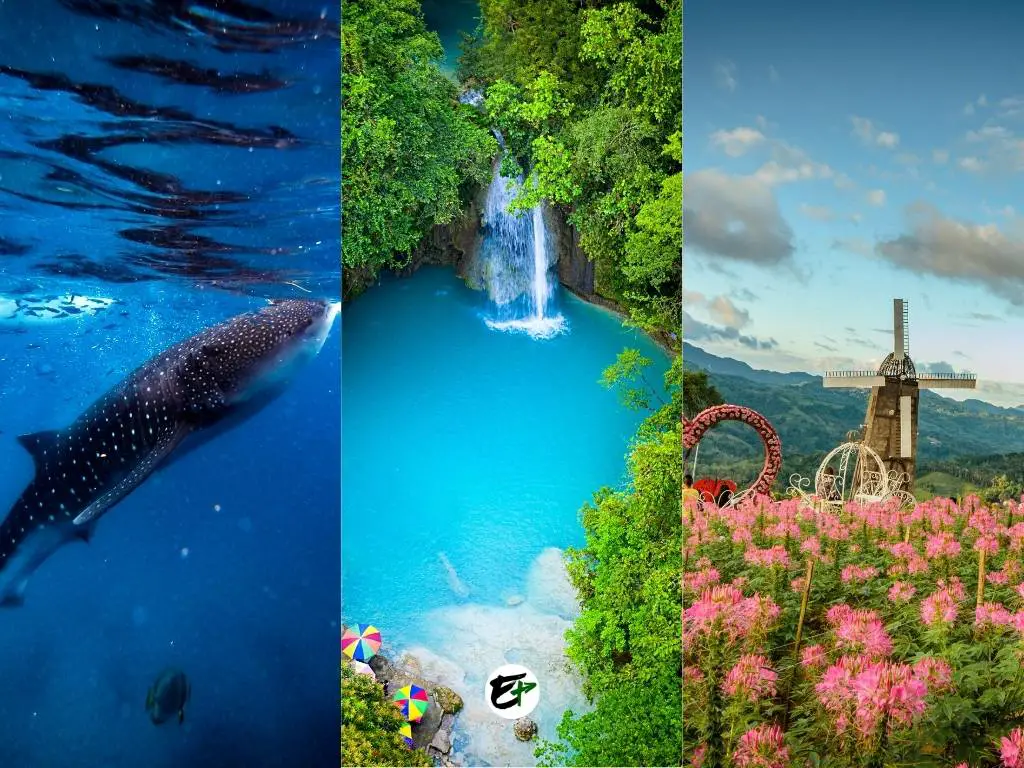
Mount Pulag Hike Requirements
Before you set off for Mount Pulag, it’s crucial to ensure that you’re physically prepared and have a health certificate. Keep in mind that the requirements for hiking Mount Pulag may change without prior notice.
For the most recent updates, check out the Mt. Pulag Protected Landscape – Bulletin (you can find the link in the resources section). Once you’re on Mount Pulag’s Facebook page, simply use the search function and type in “requirements.” This will bring up the latest announcements from the park officials.
Here’s a tip: Consider joining a travel group with an organizer. They often provide assistance with everything you need for hiking Mount Pulag, including obtaining the health certificate.
Here’s another tip: If you’re planning a DIY trip, it’s a good idea to secure your health certificate before heading to Mount Pulag.
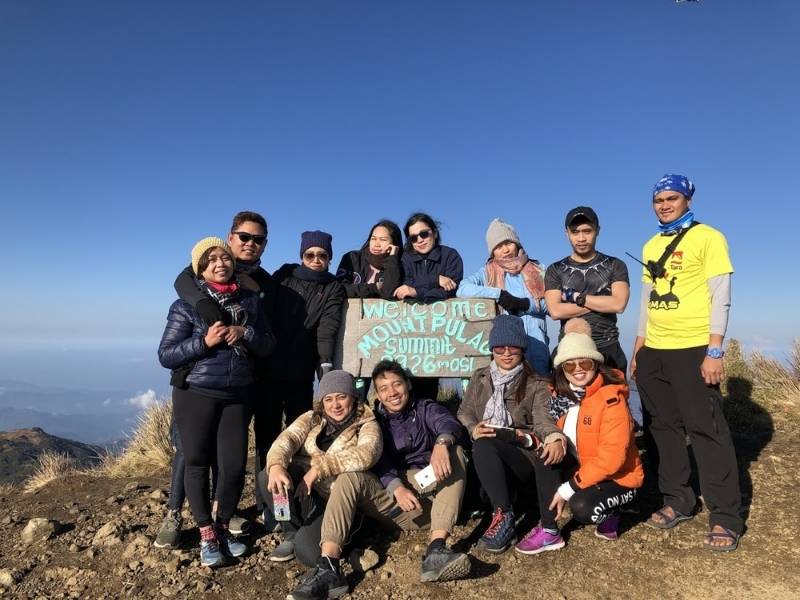
It’s absolutely essential to be in good physical condition before embarking on a hike. I have a personal experience that underscores this.
During my second hike up Mount Pulag, one of my fellow hikers injured her knee on the ascent. I’m not sure exactly how it happened, but she showed incredible determination and managed to reach the summit despite her injury. However, once we reached the peak, she could hardly move her leg.
Our guide had to radio for additional help. Two more guides came to her aid and carried her back to the ranger station on an improvised stretcher. She later showed me a photo of herself being carried by the guides, and it was both pitiful and a little funny. She looked like a captured animal being transported after a hunt!
I couldn’t help but laugh, even though I knew I shouldn’t. Despite the humor in the situation, I was relieved that the stretcher seemed sturdy and safe. Most importantly, she made it back safely. It was a stark reminder of the importance of physical preparedness when hiking.
She was an acquaintance, but we became friends in only two days! We shared many stories while in the homestay and the trail. Our craziest and scariest experiences were our topics.
Friend, if you are reading this now, please leave me a comment and tell us about your experience. I miss you!
How to Go to Mount Pulag?
There are three ways to get to Mount Pulag: by private vehicle, public transportation, or by joining an organized group tour. However, before you set off, it’s important to make sure you’ve made your reservations. The park has a daily limit on the number of visitors, so it’s crucial to secure your spot in advance.
If you’re planning a DIY trip to Mount Pulag, you can find detailed instructions in the “How To Commute To Mount Pulag” section.
For those traveling to the Philippines specifically for the Mount Pulag hike, you might want to consider booking accommodation in Manila or Luzon. After your hike up Mount Pulag, you’ll likely need a day to rest and recover. So, make sure to factor that into your travel plans as well.
You can use this link to find the best hotel deals in Manila or the Philippines.
Going to Mount Pulag By Car
Using a private vehicle is the most convenient way to reach Mount Pulag. However, you can only bring it up to the jump-off site or ranger station. The summit of Mount Pulag is only accessible through its hiking trails.
If you plan to bring your own vehicle to Mount Pulag, make sure to consider the following:
- Driving experience
- Health and power of your engine
- Parking space
Going to Mount Pulag from Manila, the road will mostly be flat until after the great rice fields of Central Luzon. When you reach Central Luzon, you can take the Baguio route or Aritao (Nueva Vizcaya) route. Use the Aritao route to skip Baguio traffic, but expect it to be more challenging because of the gigantic trucks also using the road. They are slow and can be dangerous for the enormous load they have.
Either way, both routes are zigzag and would require expert driving experience. If you haven’t tried driving in the Philippine mountains, I strongly recommend you ask/hire a more experienced driver to drive your car.
After you reach Bokod (a barangay in Bokod Benguet), expect that you’ll drive by inclining roads. I think some of the road’s inclination gradient is more than 40 degrees. Thus, you must have your car’s engine checked up if you will use your car to get to Mount Pulag. It would be a nightmare if you got stuck in the middle of the mountain roads because your engine failed.
Actually, I was in disbelief that tricycles in Bokod could carry 3 people and were still able to climb the inclining parts of the road. They were moving extremely slowly, but still!
When I visited Mount Pulag, I saw a few visitors who brought their 4×4 vehicles. However, I’m not sure where they parked their vehicle. To be sure that you’ll have a place where you can leave your car safely while you’re hiking, I suggest you book a homestay with a parking space.
Contact your homestay owner and tell them you are bringing your own vehicle.
Note. Most Mount Pulag homestays are located 1 kilometer (20-minute walk) from the ranger station. Also, remember that there’s an extra step (DENR registration and orientation) before you go to your Mount Pulag Homestay. I included this step in the next part.
Commute to Mount Pulag
Going to Mount Pulag won’t be that easy for first-timers, especially if you plan to commute and have it all done DIY. If you are a foreigner and are not used to commuting in the Philippines, you should think twice of commuting. I’m a local, and even I also think commuting to Mount Pulag is inconvenient.
Looking at the flip side, it can be adventurous at the same time! Avoid all the inconveniences by joining an organized tour which I’ll discuss in the next section.
Anyway, here is the steps if you are going to commute or have a DIY hike to Mount Pulag:
- From Metro Manila, you can book an overnight bus headed to Baguio City. The trip lasts only 4 to 5 hours (depending on season and traffic).
- When you arrive in Baguio City, rent a taxi going to the Terminal of Kabayan (Near the Old Slaughterhouse)
- Take a bus or van to Kabayan and tell the driver/conductor to drop you off at the DENR office. (See Google Map tips below)
- At the DENR office, sign up your details for safety purposes and complete your payments and requirements.
- You will be required to attend an orientation about hiking in Mount Pulag.
- After the orientation, move out of the office and hire motorcycles / habal-habal to bring you to the ranger station of Mount Pulag.
- Request a guide on your arrival at Mount Pulag’s ranger station or jump-off area.
- Rest in your homestay and prepare for the hike.
Google Map tips. Before you start your journey, make sure to mark the important locations on your map, especially the DENR office. This way, you can track your progress and know when you’re getting close to the DENR office. It’s a useful precaution in case the driver or conductor forgets about your drop-off request.
Also, don’t forget to download the map and make it available offline. This way, you can still identify your location even if there is no cellular signal. Although there is no cellular signal in most parts of the road to Mount Pulag, the GPS still should work.
Organized Group Tour To Mount Pulag
Given the challenges and expenses associated with traveling to Mount Pulag, joining an organized local group tour is undoubtedly the best option. Here’s why: The tours to Mount Pulag typically cost between 70 to 90 USD (approximately 4000 to 5000 PHP as of 2023) for a day hike. When you consider the cost of gas and the convenience of transportation, it’s definitely worth the price!
However, keep in mind that the day hike usually begins at 1 AM on the second day, and you’ll be staying at a homestay the night before the actual hike. So, in total, it’s a 2-day trip. If you’re coming from Manila, your journey will start at 12:00 am on Day 1 (departure from the city).
Most group tours conducting a day trip to Mount Pulag include:
- Homestay or Tent
- Dinner (Day 1), breakfast (Day 2), and lunch (Day 2)
- Guide Fee
- DENR Fee
- Vehicle Rent
- Gas
- Toll fee
- Coordinator fee
Essentially, with these tours, you won’t have to worry about transportation, accommodation, or registration. All you need to do is prepare yourself for the hike.
Currently, there are no international companies (like Klook or GetYourGuide) offering hiking tours to Mount Pulag. Almost all tours are led by local groups and organizers. You can find their official pages and contact information on Facebook and Instagram.
If you’re having trouble finding trustworthy tour organizers, I can suggest two travel groups. They are very professional, and I’ve had positive experiences with them on several occasions.
- Malaya Travels PH — Join them for a more premium experience. They are a group of talented photographers that organizes tours and gives you a bunch of photo souvenirs after the trip.
- TaraKahitSaan — Try them for good quality, budget-friendly tours.
See the resources section of this post for more information.
Reserve Your Mount Pulag Hike
To prevent overcrowding and destruction of Mount Pulag National Park, the park’s caretakers limit the number of visitors who can enter the hiking trails. Everyone wanting to visit is required to reserve a slot.
To reserve, you may send a reservation message through the numbers below. These numbers are sent by Mount Pulag National Park’s Facebook page autoresponder. If none of them works, you go to their Facebook page and check if there are newly announced contact numbers.
Please send a message only during office hours from 8:00 am to 5:00 pm, Mondays to Fridays.
Trek/hike/visit reservation:
Smart: 09612499071
Smart: 09303419847
Globe: 09165424030
Alternative contact numbers:
- 09199951316
- 09103010423
- 09127628844
- 09301778717
- 09072816467
- 09487141375
- 09461764102
- 09106412678
- 09261626786
Contact for visiting Mount Pulag Park’s mountain lakes:
- 09109365532
- 09107645659
Hiking trails and ranger station contact numbers:
Tawangan — 09161551667
Babadak Ranger Station — 09462435212
Akiki Trail — 09127986765
Best Time to Hike Mount Pulag
The ideal time to visit Mount Pulag is during the dry season. However, the exact start and end dates of this season are determined by PAGASA (Philippine Atmospheric, Geophysical, and Astronomical Services Administration), so it’s a good idea to stay updated with the news.
The dry season also coincides with the peak tourist season, though. For a more enjoyable hiking experience, consider visiting Mount Pulag on weekdays when there are fewer visitors. This will give you a more peaceful experience and the opportunity to take beautiful photos without the crowds.
The charts you downloaded from meteoblue.com should provide a good indication of the monthly weather patterns on Mount Pulag.
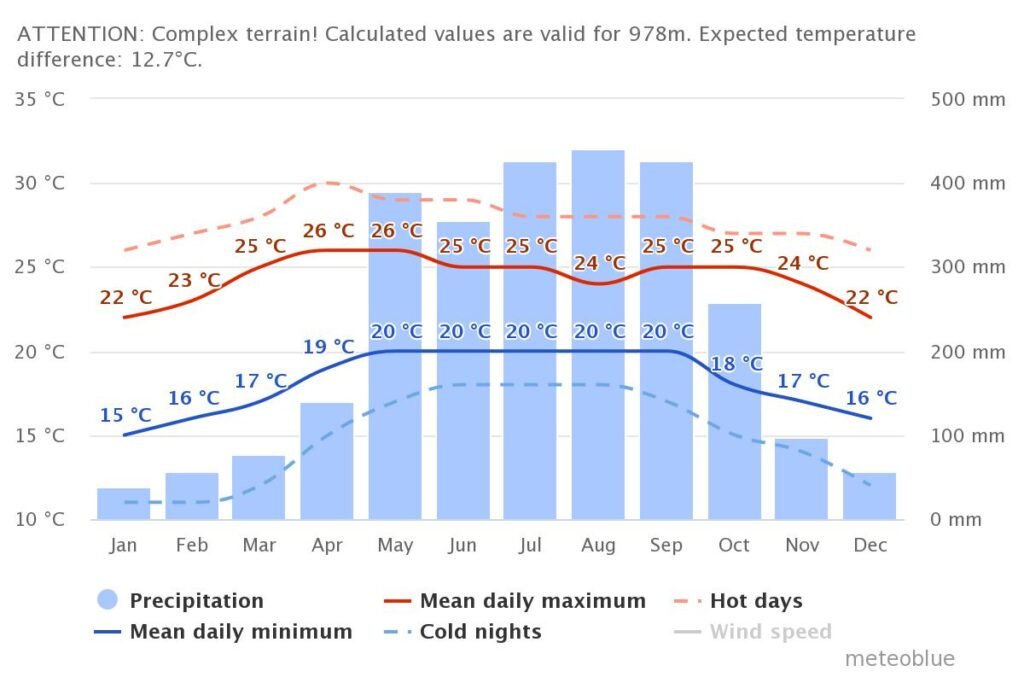
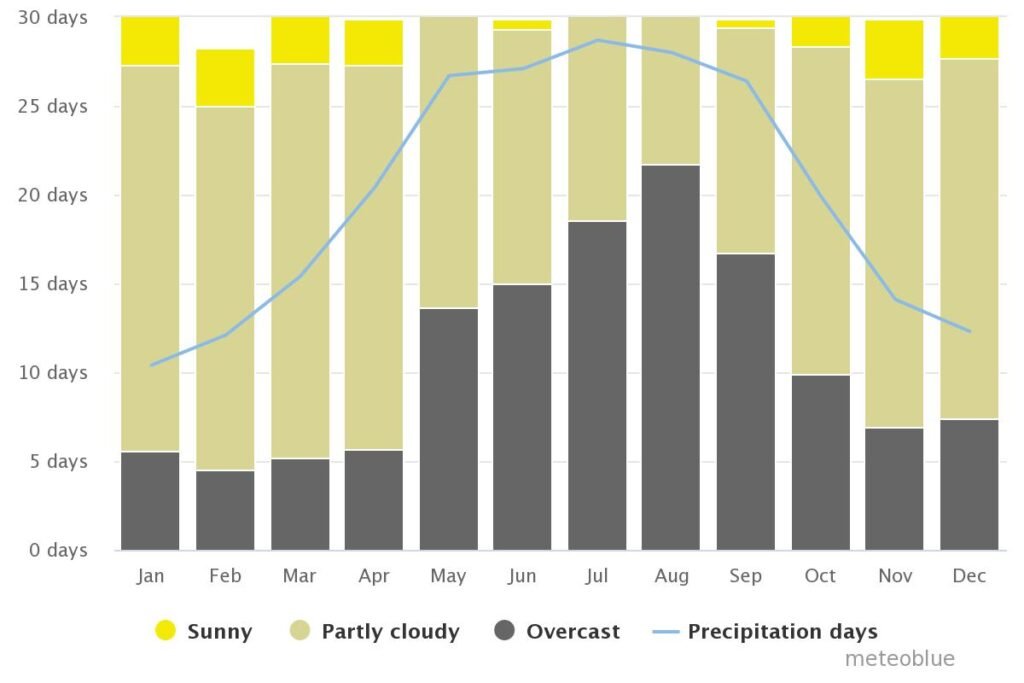
I prefer to visit during the months with the least precipitation and a cooler climate. I love seeing a clear sky while in the mountains, which is most likely from December to April. We all want to avoid the fog that obscures the breathtaking views of the mountain, right?
While these graphs can suggest the best times for hiking, they can’t guarantee perfect conditions. Even the chart showing the likelihood of overcast clouds doesn’t ensure the formation of a sea of clouds. For instance, my first hike up Mount Pulag was in January, and we were battered by winds and rain from midway to the peak. We didn’t get to see the sea of clouds that time.
However, I was luckier on my second hike in March and finally got to witness the magnificent sea of clouds.
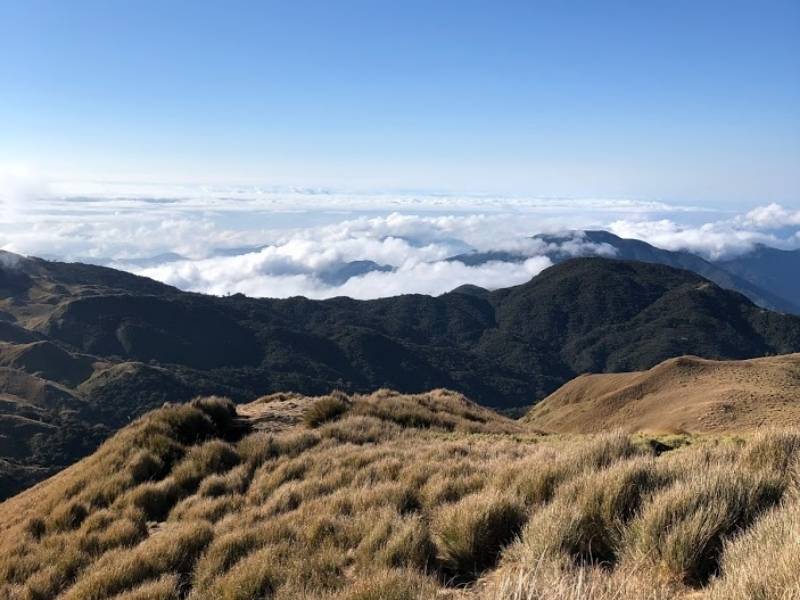
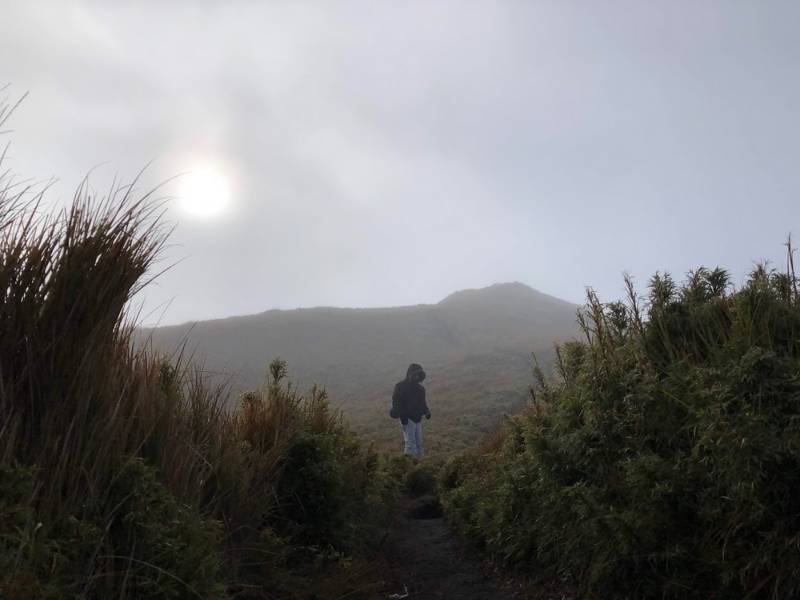
Things to Bring in Mount Pulag
What you need to bring for your hike up Mount Pulag depends on the duration of your hike (day hike or overnight) and the time of year. If you’re planning to hike from November to February, be prepared for single-digit temperatures (in Celsius) at night. In this case, you should pack extra jackets and emergency blankets.
On the other hand, during the dry and hot season, the temperature on the Mount Pulag trails typically ranges from around 15 to 20 degrees Celsius. During this time, you’ll likely only need to wear layers of jackets in the evenings and early mornings.
Anyhow, here is a quick checklist of items to bring when hiking Mount Pulag:
| Item | Overnight Camp | Day Hike |
|---|---|---|
| 3L bottles of water or Water Bladder | NEED | NEED |
| Snacks | NEED | NEED |
Pre-cooked food |
NEED |
OPTIONAL |
Jacket |
NEED |
NEED |
Hiking Pants |
NEED |
NEED |
| Wind Breaker/Cap/Bonnet | NEED | NEED |
| Gloves | OPTIONAL | OPTIONAL |
| Clothes of Layering | OPTIONAL | OPTIONAL |
| Extra Clothes (after hiking) | OPTIONAL | OPTIONAL |
| Rain Coat | NEED | NEED |
| Emergency Blanket | NEED | NEED |
| Thick socks | NEED | NEED |
| Hiking Shoes | NEED | NEED |
| Slippers | NOT NEEDED | OPTIONAL |
| Trekking Pole | OPTIONAL | OPTIONAL |
| Plastics and Garbage bag | REQUIRED | REQUIRED |
| First Aid and Medicines | NEED | NEED |
| Toiletries | NEED | NEED |
| Camera | OPTIONAL | OPTIONAL |
| High capacity power bank | NEED | OPTIONAL |
| Headlight | NEED | NEED |
| Waterproof bag or bag with a waterproof cover | OPTIONAL | OPTIONAL |
| Sleeping bag | OPTIONAL |
NOT NEEDED |
| Sleeping mat | OPTIONAL | NOT NEEDED |
| Camping tent | NEED | NOT NEEDED |
| Cooking Gear and Eating Utensils | OPTIONAL | NOT NEEDED |
| Portable fire extinguisher | REQUIRED | NOT NEEDED |
| Safety whistle | REQUIRED | REQUIRED |
IMPORTANT
- DENR imposed hikers to bring portable fire extinguishers and safety whistles if they will be camping overnight. The authorities do not want another fire to spread in the mountains like last 2018.
- Bringing garbage bags is required as everyone should be responsible for making Mount Pulag national park clean. Visitors must carry down the used food wrappers and plastic bottles.
Mount Pulag Hiking Trails
As I mentioned earlier, you can choose to do a day hike or an overnight hike (2d 1n or 3d 2n hike) in Mount Pulag. The duration of your visit will depend on the hiking trail you choose. Mount Pulag has four main hiking trails: Ambangeg, Akiki, Tawangan, and Ambaguio Trail.
Before your actual hike, an officer from Mount Pulag National Park will conduct an orientation where they’ll introduce these trails, as well as provide information about Mount Pulag’s history, flora, and fauna.
While I can’t provide detailed descriptions of each trail as I haven’t tried them all, I can share a summary based on what I learned during the orientation:
- Ambangeg: This is the easiest trail and is often described as being like a walk in the park. However, this description is more suited to experienced hikers. For beginners, it could be challenging, but anyone in good physical condition should be able to manage it.
- Ambaguio: This is the longest of all four trails.
- Akiki: This trail is considered the toughest.
- Tawangan: If you want to see the four lakes around Mount Pulag (Abeo, Ambulalakao, Iculus, and Detanapco), this is the trail to take. You’ll also get a glimpse of Luzon’s second-highest peak, Mount Tabayoc.
Remember, no matter which trail you choose, the journey will be worth it!
Mount Pulag Hike For Beginners?
Absolutely, I would recommend Mount Pulag for beginners. However, if you’re a beginner, I suggest taking the Amba-Amba route (which is a round trip on the Ambangeg trail) and make sure to condition your body for hiking at least a week before the hike.
During my first and second hikes up Mount Pulag, more than a third of my fellow hikers were first-time mountain climbers. In fact, Mount Pulag was the first “real” mountain I ever hiked! If they and I could conquer Mount Pulag on our first try, you certainly can too!
Ultimately, the view from the summit of Mount Pulag is absolutely rewarding. Unless you’re unlucky with the weather, you’re guaranteed to see a view that you’ll remember for the rest of your life!
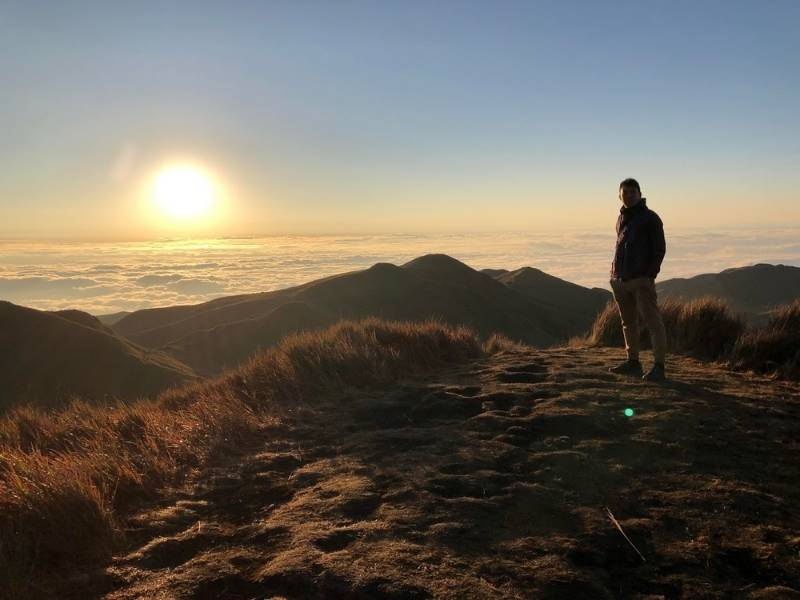
Where to Go After Mount Pulag
Whenever my friends ask me which place in our country they should also see, there are three I automatically suggest: South Cebu, Sagada, and Maligcong.
- South Cebu — Known as the Philippines’ adventure capital, South Cebu has something for everyone. Whether you’re looking for a bustling city, a relaxing beach, a challenging hike, or even an exhilarating canyoneering experience, you’ll find it here! Read my post about South Cebu (a weekend itinerary or longer).
- Sagada — Perfect for soul-searching or immersing yourself in the culture of the northern Philippines. It’s a great place to create lasting memories with family and friends amidst nature. And yes, there’s plenty of adventure to be had here too! Check out my post about Sagada and the list of things to do here.
- Maligcong — A hidden gem in the northern Philippines. Here, you can hike up a mountain and marvel at the most stunning rice terraces in the country. It’s an experience you simply can’t miss! See how beautiful Maligcong with my travel guide post.
Discover other top experiences in the Philippines:
Save it on Pinterest.

